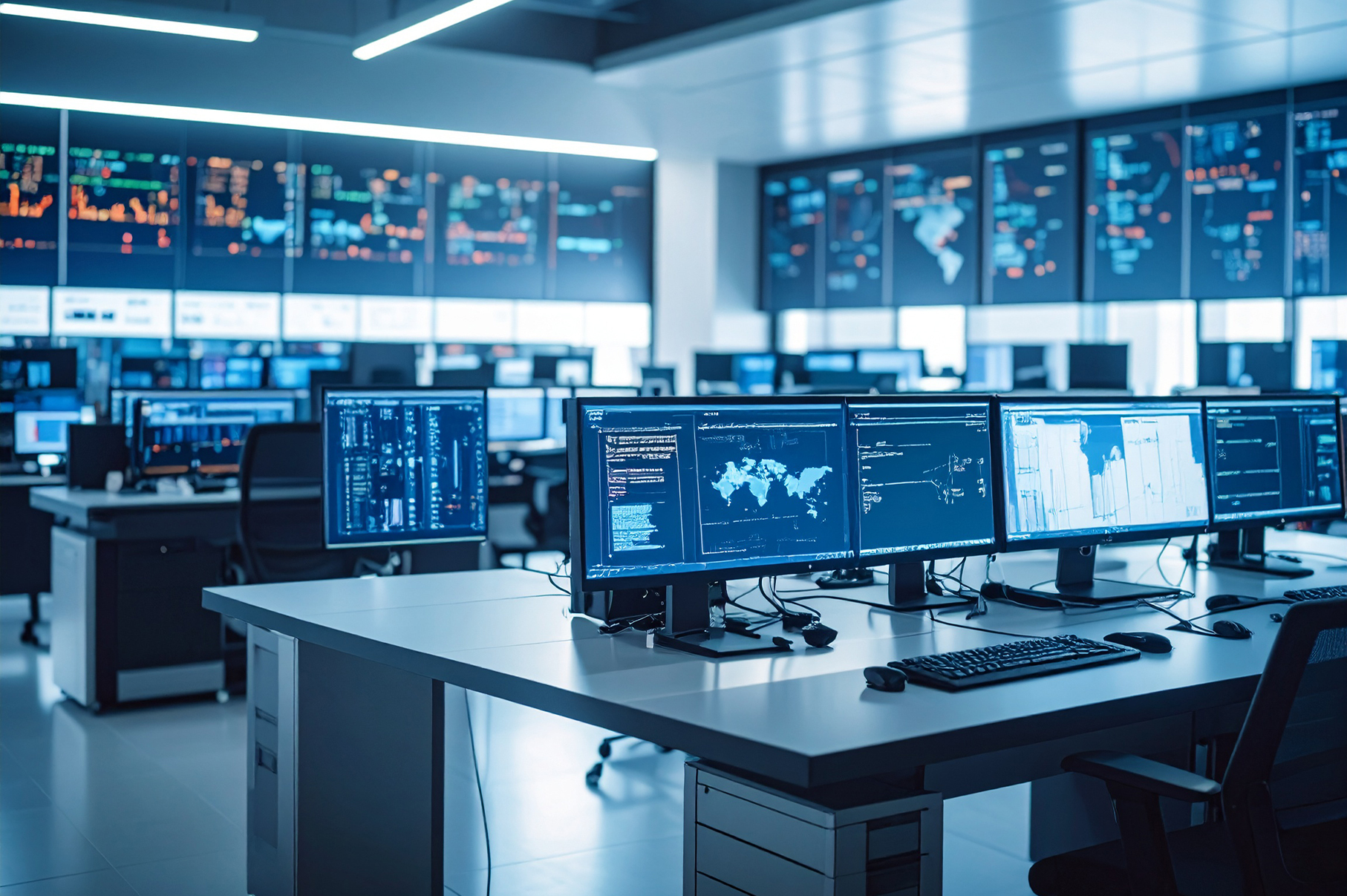As we step into 2025, the landscape of software development continues to evolve at an unprecedented pace. The blend of innovation, automation, and digital transformation is redefining how software is designed, built, deployed, and maintained. For any software company in Kerala or the best software development company in Kochi, staying ahead of these trends is not optional—it’s a necessity. Whether you are a startup or among the top IT companies in Kochi, understanding where the industry is headed is the key to sustainable growth.

What Are the Key Trends Reshaping Software Development in 2025?
Software development is entering a new era in 2025, fueled by advancements in automation, artificial intelligence, and cloud technologies. These key trends are reshaping the way developers and every leading best IT company in Kochi create, manage, and deliver software solutions across industries.
AI-Powered Development: Redefining Software Creation
Artificial Intelligence (AI) is no longer a peripheral tool in software development—it’s becoming the core engine driving code creation, debugging, and optimization. By 2025, AI-powered coding assistants like GitHub Copilot, Tabnine, and Amazon CodeWhisperer will be integrated into standard development workflows, automating repetitive tasks, suggesting optimized code snippets, and reducing development time dramatically.
Natural Language Processing (NLP) will enable developers to write logic using plain English commands, bridging the gap between non-technical stakeholders and development teams. AI will also be critical in automated testing, code refactoring, and security vulnerability detection, making the development lifecycle smarter and faster.
Low-Code and No-Code Platforms: Democratizing Development
The demand for rapid digital transformation is accelerating the adoption of low-code and no-code development platforms. Tools like OutSystems, Mendix, and Bubble are empowering
non-developers and business users to build applications through visual interfaces, significantly reducing the time to market.br
In 2025, we anticipate a surge in enterprise-level adoption of these platforms for internal tools, process automation, and customer-facing applications. However, developers will still play a crucial role in integrating and extending these platforms with custom logic and APIs, maintaining security and scalability.
Cloud-Native Development: A Standard, Not an Option
With the growth of microservices architecture, Kubernetes, and containerization, software development is shifting permanently toward cloud-native environments. In 2025, cloud-native development will be the default approach for scalable, resilient applications.
DevOps and DevSecOps practices will continue to mature, with continuous integration and continuous deployment (CI/CD) pipelines becoming fully automated, secure, and intelligent. Hybrid cloud and multi-cloud strategies will dominate enterprise IT, with platforms like AWS, Microsoft Azure, and Google Cloud competing on features like AI integration, serverless computing, and edge deployment.
Quantum Computing: Preparing for the Paradigm Shift
While still in its early stages, quantum computing is poised to disrupt software development in profound ways. By 2025, quantum programming languages such as Q#, Qiskit, and Cirq will gain traction, and organizations will begin exploring quantum algorithms for optimization, simulation, and encryption.
Forward-thinking developers will start familiarizing themselves with quantum principles, as industries like finance, healthcare, and logistics seek to exploit quantum advantage. Although mainstream quantum applications are years away, 2025 will mark a pivotal year in quantum-readiness for software teams.
Enhanced Cybersecurity-First Development
With cyber threats growing in scale and complexity, 2025 will see software development practices being tightly coupled with security at every stage. The shift-left approach to security will be the norm, ensuring vulnerabilities are addressed during development rather than post-deployment.
Software Composition Analysis (SCA), Static Application Security Testing (SAST), and Dynamic Application Security Testing (DAST) will be integrated into CI/CD pipelines. Moreover, zero trust architecture, secure access service edge (SASE) models, and AI-based threat detection will redefine how developers approach security.
Edge Computing and IoT Development
The proliferation of IoT devices and the demand for real-time data processing are driving the rise of edge computing. In 2025, applications will increasingly be built to run at the network edge, closer to data sources, reducing latency and enhancing user experience.
Developers will need to build software optimized for edge nodes, focusing on lightweight frameworks, offline capabilities, and efficient data sync mechanisms. Key industries embracing edge-native development include healthcare, manufacturing, smart cities, and autonomous vehicles.
Blockchain Integration Beyond Cryptocurrency
While originally associated with cryptocurrencies, blockchain technology is now redefining data transparency, security, and decentralization in software applications. In 2025, blockchain-based solutions will permeate supply chain management, identity verification, smart contracts, and digital voting systems.
Developers will increasingly use platforms like Ethereum, Hyperledger, and Solana to create decentralized applications (dApps) with tamper-proof logs and automated enforcement of rules. The growth of Web3 and decentralized finance (DeFi) will require a new breed of developers fluent in Solidity, consensus algorithms, and tokenization.
Sustainability and Green Software Engineering
Environmental concerns are influencing software development practices, leading to the rise of green software engineering. In 2025, sustainable coding will focus on energy-efficient algorithms, resource-aware architectures, and carbon-conscious cloud usage.
Development tools will include metrics for carbon footprint analysis, while cloud providers will offer carbon-aware load balancing. Green practices will become a competitive advantage, especially for organizations aligning with ESG (Environmental, Social, and Governance) goals.
The Rise of Multimodal Interfaces
Traditional user interfaces are evolving rapidly. By 2025, software will be expected to support multimodal interaction, including voice, gesture, AR/VR, and haptic feedback. Conversational UIs driven by generative AI models will replace static interfaces, enabling more intuitive, natural user experiences.
Extended Reality (XR) development will become mainstream in industries such as education, healthcare, retail, and gaming. Developers will need to master tools like Unity, Unreal Engine, and WebXR, and focus on accessibility, real-time performance, and immersive storytelling.
Developer Experience (DevEx) Becomes a Competitive Edge
Organizations are recognizing that developer experience is key to productivity, retention, and innovation. In 2025, companies will invest heavily in improving internal developer platforms (IDPs), documentation quality, tooling consistency, and collaboration environments.
AI-enhanced IDEs, real-time collaborative coding tools, and cloud-based development environments (like Gitpod or Codespaces) will dominate. Developer-centric culture—focused on autonomy, efficiency, and feedback loops—will become the standard for high-performing software teams.
The Role of Kerala’s Software Ecosystem in 2025
Kerala is fast emerging as a software innovation hub in South India. With highly educated talent, government-backed IT parks, and increasing startup activities, Kochi has become a breeding ground for innovation.
Top IT companies in Kochi are:
- Partnering with global enterprises
- Building SaaS-based solutions
- Offering end-to-end digital transformation services
- Integrating AI and IoT for smart city solutions
Spotlight: DriveCloud360 – Revolutionizing Vehicle Management with SaaS
Among the wave of industry-specific SaaS solutions emerging in 2025, DriveCloud360 stands out as a prime example of how software innovation is transforming traditional business operations. Developed by Saiha Software, DriveCloud360 is a powerful Rent-A-Car andtraditional business operations. Developed by Saiha Software, DriveCloud360 is a powerful Rent-A-Car and Vehicle Management Software that enables car rental businesses to manage fleets, bookings, customers, billing, and analytics—all from a single cloud-based platform.
Vehicle Management Software that enables car rental businesses to manage fleets, bookings, customers, billing, and analytics—all from a single cloud-based platform.
In line with 2025's shift toward cloud-native development, DriveCloud360 leverages automation, real-time data access, and intuitive dashboards to offer seamless user experiences for both operators and customers. It represents the growing trend of vertical SaaS platforms that provide tailored solutions for niche markets, combining scalability, security, and cost-effectiveness.
As software companies in Kerala, especially the top IT companies in Kochi, look to develop similar specialized products, DriveCloud360 exemplifies the future of smart, industry-driven software solutions.
Conclusion
The future of software development in 2025 is about automation, scalability, user-centricity, and innovation. Companies that embrace these trends will not only outperform competitors but also shape the digital future of the nation.
that understands these emerging trends and can guide your digital journey with confidence.
Whether you're seeking web applications, mobile solutions, cloud-native services, or enterprise-grade systems, investing in forward-thinking software development today is the smartest decision for tomorrow.



